On Oct. 7, 2023, May Hayat and her best friend, Liron Barda, the bar manager for the Nova Musical Festival in Re‚Äôim, Israel, arrived early in the morning to oversee their typical daily tasks. Less than 15 minutes later, the image of an ordinary day that Barda and Hayat expected was shattered as rockets pierced the sky and sent people around them running.¬Ý
For the next few hours, Hayat ran through open fields as bullets whizzed by. Hiding under the event stage, she fled from an attempt by attackers to hold her hostage, and witnessed the brutal murder of fellow festival-goers.¬Ý
Thirteen hours after the music fell silent, Hayat received the call.
“My best friend, my soul sister, didn’t make it. Liron was a hero … She was the best person in the world, and she really lived every day like it were the last,” Hayat said, choking back tears.
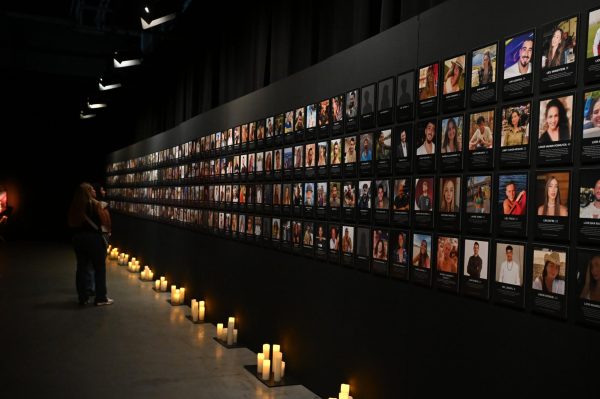
An intimate crowd sat to hear Hayat‚Äôs testimonial on Oct. 7, 2025, as part of an exhibition in South Boston memorializing the Nova Music Festival. The exhibition featured a series of displays created to commemorate the deadly events of the Oct. 7 attacks.¬Ý
The attacks brought the Nova Music Festival to a halt two years ago, when Hamas militants killed over 1,200 civilians and took over 250 people hostage. The festival, which took place in the border community of Re’im, just outside the Gaza Strip, drew thousands of attendees. But the music fell silent around 6:29 a.m., and in its place, gunfire and rocket explosions penetrated the air.
“I ran for my life for around four or five hours. I think I ran or walked barefoot for around 20 kilometers,” Michael Khudoley, another survivor, told The Beacon. “There is some times I can’t even eat well because I have blame and guilty feelings about me being alive and other people aren’t.”
At the exhibition, five survivors of the attacks, including Hayat and Khudoley, shared their experiences.
“This exhibition takes me back, which is hard sometimes, today especially. It’s a very emotional day,” said Yaelle Bonnet, a survivor from Haifa, Israel. “But being all of us here together, having this community and being able to also go back and reflect on my own experience is huge.”
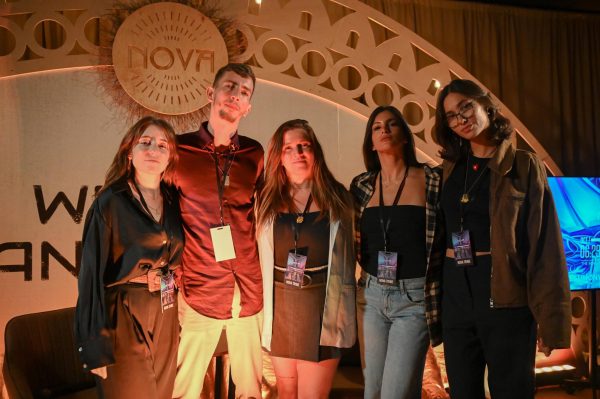
The Tribe of Nova Foundation, created by producers of the Nova Music Festival shortly after the Oct. 7 attacks, helped organize the exhibition. It was first unveiled in Tel Aviv, but has since travelled to nine cities across the U.S., Canada, and South America.
The foundation was created to assist those impacted by the attacks through services such as therapy meetings, healing concerts, and memorial events.
‚ÄúThis community has done a lot of amazing stuff for us, and it still does,‚Äù Khudoley said. ‚ÄúI think it got me out of my house, and it was really difficult to see that life goes on, and people keep working, living, even though I got stuck for two years on the same date.‚Äù¬Ý
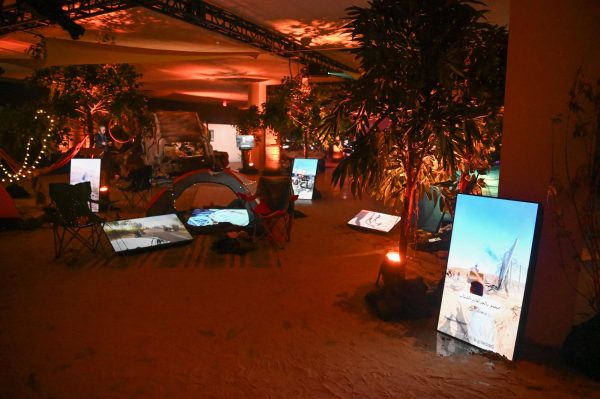
The first room of the exhibition was transformed to immerse visitors in recreations of the festival. A section of the room, labelled the “Camping Area,” was covered in sand with tents, camping chairs, and string lights strewn about. The dim lighting starkly contrasted bright video displays and cell phones scattered across chairs and propped up next to tents. Exhibited on screens were videos, taken by those present during the attacks, detailing graphic scenes of brutality towards the victims, periods of exchanged gunfire, and recorded messages of people hiding from the attackers.
Other displays included multiple charred cars salvaged from the scene of the attacks, knocked over portable toilets, and speaker systems playing deep, rhythmic music, all of which were intended to submerge the visitors in the experience.¬Ý
“It felt really real, and you could connect and try to have a small understanding of what those people went through,” said Roni, a visitor at the exhibit, who withheld her last name upon request. “Maybe once people see proof and hear real stories, they will try and possibly understand what happened there.”
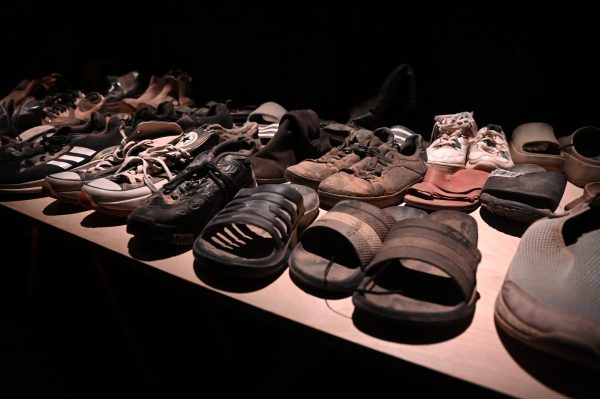
The next room of the exhibit was dedicated to the hundreds of people who lost their lives during the attacks, and those who are still being held hostage. Abandoned belongings and shoes coated in dust recovered from the festival grounds scattered the tables of “The Lost and Found.” Additionally, a long wall memorialized more than 400 victims with their pictures and names. Visitors were encouraged to leave notes along a candlelit platform that was placed at the foot of the memorial wall.
“It’s not only pictures … it’s people, it’s full lives and families and stories that are behind those pictures,” Khudoley said. “The picture couldn’t really represent the good and kindness that they had in them, but it’s still something I think the world should see.”
One of the final rooms of the exhibition was “The Healing Room,” in which visitors are invited to sit and reflect and watch a short video with perspectives of the Tribe of Nova partners and leadership.
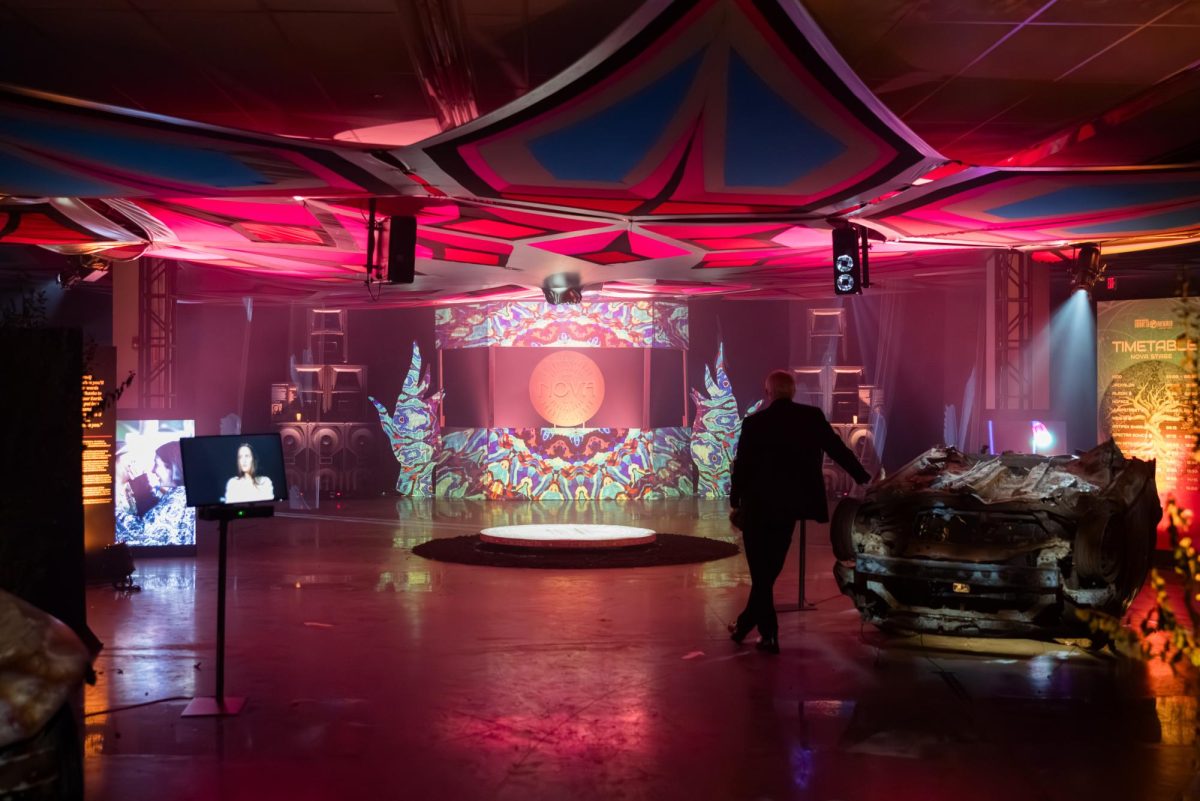
The Boston exhibition will remain on view until Oct. 21. Bonnet hopes that it will help people gain new insights into the events of the Oct. 7 attacks.
“I’m not looking to change anyone’s mind personally. I’m not fighting hate…I’ve come to share my story, my light, our light,” Bonnet said. “That’s all we came to do. We just wish for people with open minds to come and see.”